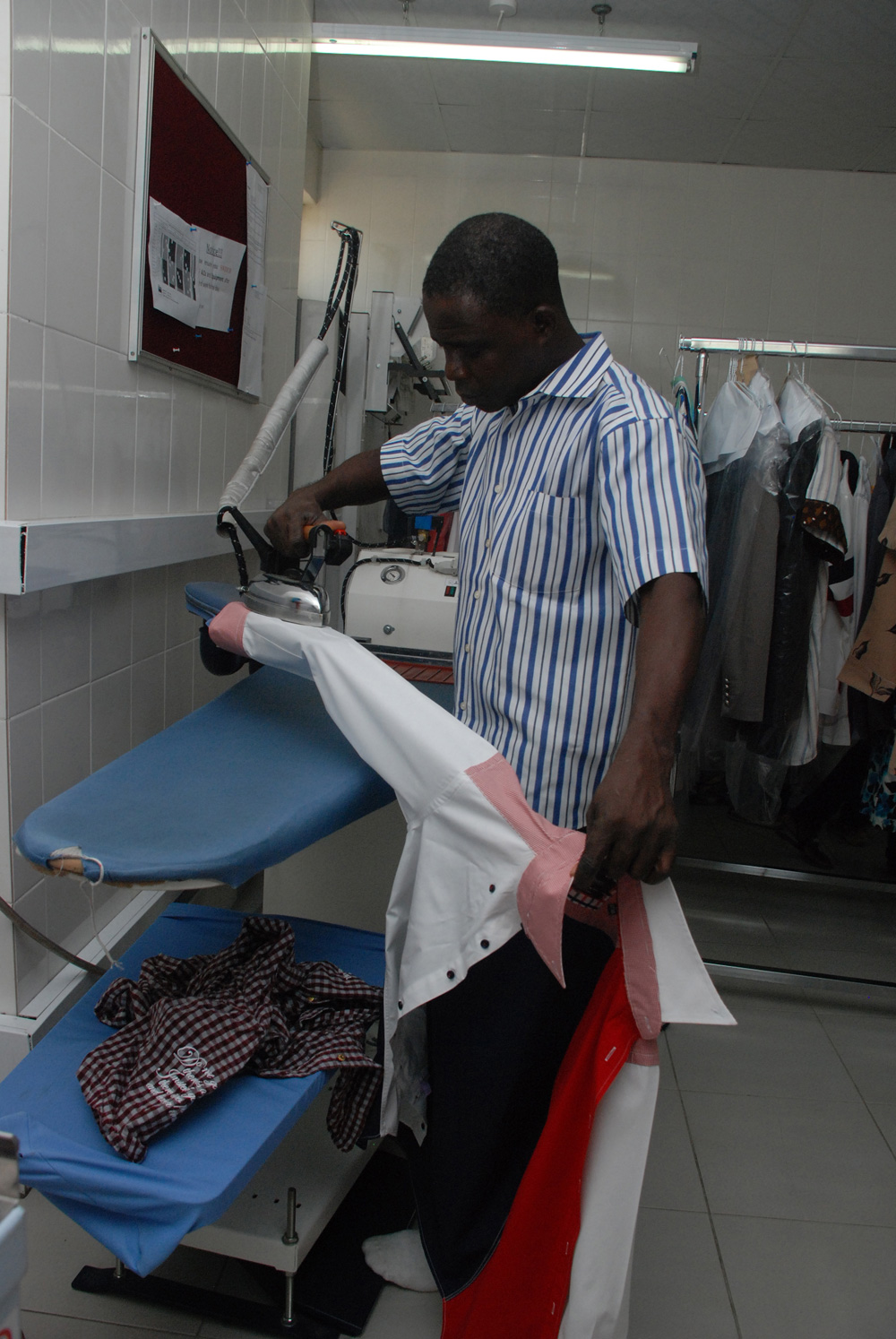Frequently Asked Questions
We clean all of our wedding gowns here at our factory. We also invite you to come in and view your gown before we place it into the preservation chest so you know exactly what it looks like and your aren’t left to wonder.
In addition to using the proper amount of soap and separating darks from lights, we keep your whites whiter using two methods. First, we distill our cleaning solvent after every load to make sure your clothes get clean, fresh solvent every time. The second thing we do to ensure your white garments stay white is by using separate cleaning machines for light garments and dark garments. This adds another layer of protection against a fugitive dye from changing the color of your white garments.
The simple answer is maybe. A lot factors go into whether a stain will come out or not. Some stains are permanent, some stains can be ‘set’ by improper stain removal, and some stains cannot removed due to the stability of the other dyes (the dyes that are supposed to be there) in the garment. That being said, we employ the best cleaning methods available, use clean solvent in each load, our stain removal specialists have many years of experience along, and we stay current with new clothing trends. All of these tools give us the highest chance for success in stain removal (if the stain can come out).
Quite the opposite. Regular dry cleaning prolongs the life of your clothing by removing stains and dirt that would have otherwise become embedded in your clothing and eroded the fabric.
Your vintage wedding gown can be transformed into a gleaming shade of white, provided that the material is not too dry and brittle to endure the necessary treatments.
It is extremely important to have your garments cleaned prior to placing them in storage. Even if clothing appears to be clean, invisible stains and debris such as perfume, body oil, food stains, etc. can discolor and ruin fabric.
Hard to remove stains such as food, drink and perspiration typically set in within 48 hours. It is best to bring your garments in for a cleaning as soon as possible to avoid yellowing, discoloration and weakening of the fabric.
Your garments are closely inspected prior to cleaning. Pockets are emptied, buttons are protected, zippers are checked. Stains are pre-treated prior to being treated with the dry cleaning solution, steam and vacuumed.
After cleaning, your garments are finished and pressed. The final touches include replacing missing buttons, small repairs and packaging.
While there are many reasons to send your garments to a professional dry cleaners, the most important reason is to prolong the life of your garments while keeping them looking their best. One of the properties of dry cleaning solvent is that it is much gentler than water on your garments. Another property is that it cleans grease and dirt out of garments much better than with water.
We ask for at least three days to clean and press your garments, however we can process them faster if requested. If you bring your garments in by 10 am , they can be ready by 5 pm. If you bring your garments in after that, your garments can be ready the next production day by 5pm (there is no production on Saturday and we are closed on Sunday). Some items such as wedding gowns and comforters take longer.
Just about any quality fabric should be dry cleaned. Satin, silk, chiffon, tulle, wool, acetate, linen, organza, 4-ply polyester and any fabrics lined in leather or suede should all be dry cleaned. Also, any clothing with embellishments such as fancy beadwork, rhinestones or sequins should be professionally cleaned. You may also check the labels of your clothing for proper care.
Dry cleaning removes any dirt, oil and debris form the garment, including body oils, food oils and wax. With a pre-treatment, dry cleaning can also remove tougher stains such as coffee and perspiration. Once your garments have been cleaned, they are finished. This process makes the garment look as good as new and corrects any mishaps such as missing buttons or crooked pleats.
Dry cleaning is similar to washing but without the water. Dry cleaned garments are cleaned in a machine that looks like a giant washer with one major difference – instead of using water or anything water based, a liquid is used that does not contain any water.
Three things cause shrinkage in garments, heat, mechanical action, and moisture. By removing moisture from the cleaning process and replacing it with a liquid that contains no water, garments like your wool pants can now be safely cleaned without shrinkage. Materials like wool and silk generally have to be dry cleaned. By eliminating moisture from the cleaning process we are able to get your garments clean while extending their life all without shrinking anything.
After your items are cleaned, they are pressed. Pressing is what takes the wrinkles out of your garments.

